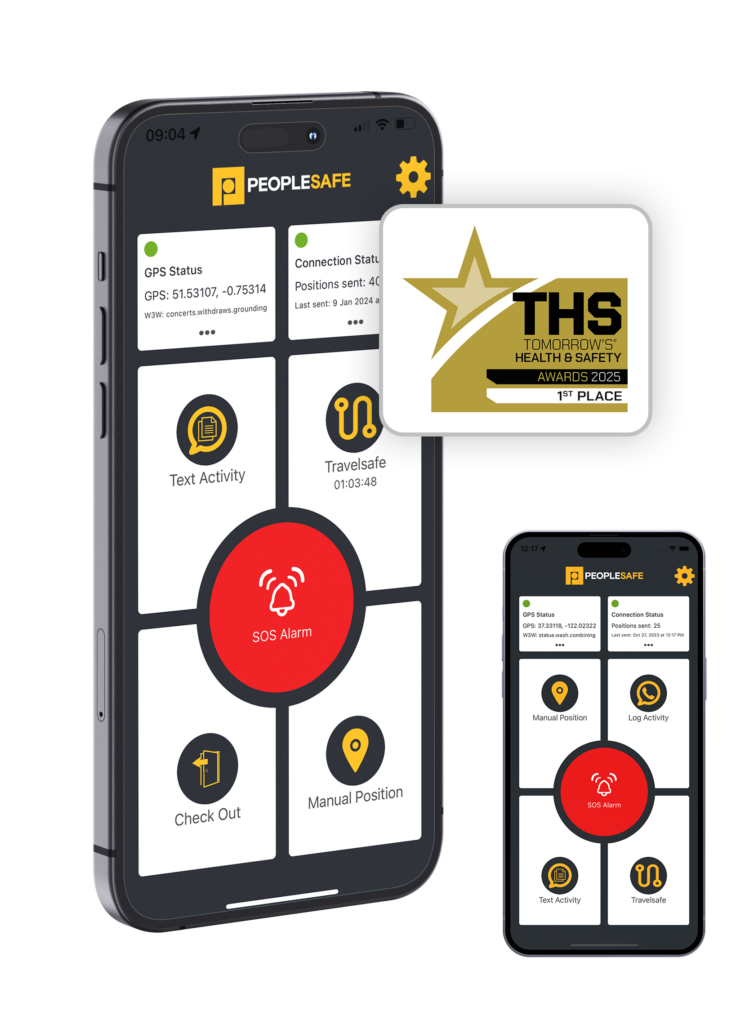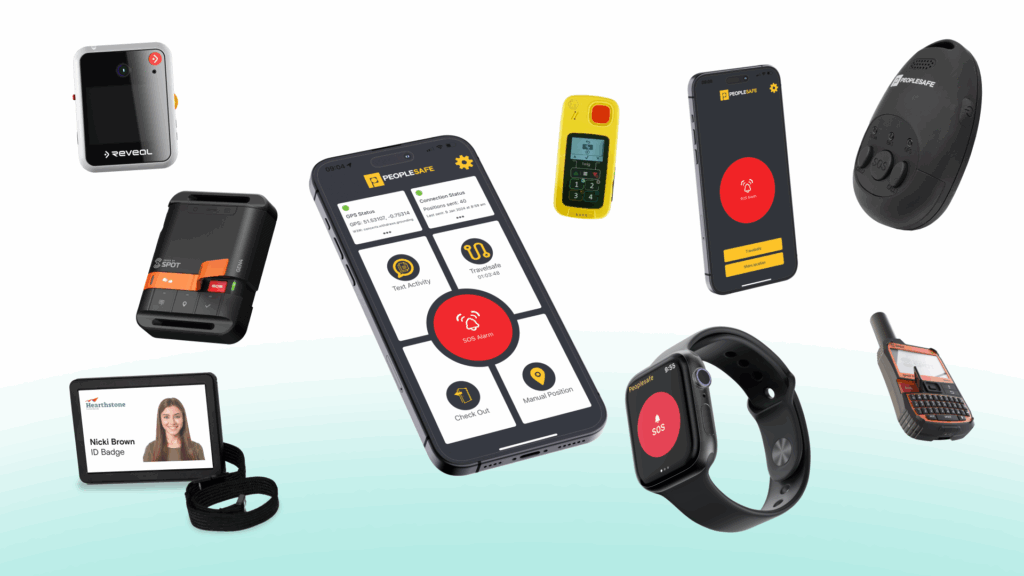The Importance Of Training Lone Workers
Training is a necessity to ensure that employees – on a fundamental level – understand how to perform their job role. Appropriate training is also important to educate workers on how to carry out their job safely. Manual handling, fire safety and use of heavy machinery are some of the most common health and safety training sessions provided by organisations. Usually, they are conducted as part of the induction program when an employee first joins a new company.
For lone working staff, additional training may be required in order to deal with the specific risks of working alone and help provide optimal lone worker support. Without colleagues around, it is often more difficult for lone workers to get help in the event of an emergency. Therefore, they need to be trained to cope with uncertain and unexpected situations such as injury or violence.
Risk assessment and supervision
The Management of Health and Safety at Work Regulations 1999 places an obligation on organisations to carry out a risk assessment to identify the risks and hazards associated with each job role. The outcome of this process will help to identify training requirements to meet the needs of each individual employee.
According to the updated HSE (Health and Safety Executive) guidelines, employers must monitor lone workers and keep in touch with them. The levels of supervision provided for each lone worker should be based on the risk assessment: the higher the risk, the more supervision they will need. The employee and their ability to identify and handle health and safety issues also need to be taken into consideration when planning supervision measures.
What is lone worker training?
Training is a vital step in ensuring the safety of all staff, but for lone working employees, training is particularly important. Working independently means there are no colleagues around to point out a health and safety risk that could lead to an accident or provide a helping hand in the event of an emergency. Therefore, lone workers need to have the ability to identify and handle risks by themselves.
Dynamic risk assessment
While steps can be taken to reduce workplace risks, lone workers are often in environments that are difficult to control such as someone else’s home or in the community. As a result, there is always the chance of unexpected risks arising so lone workers should be trained on how to approach these.
A dynamic risk assessment refers to a continuous process of mentally analysing and assessing a live environment to identify hazards and risk of harm – this allows employees to become aware of a potentially dangerous environment or situation and focus on reducing known or suspected risk factors.
For some simple tips on conducting a dynamic risk assessment during a lone working visit, view our infographic.
Diffusing aggression and conflict resolution
Unfortunately, workers dealing with members of the public or directly with customers are likely to experience aggression, with the Crime Survey for England and Wales reporting that there were 649,000 incidents of violence at work in 2022/23.
To avoid an incident escalating to the point of violence, workers should be trained on how to identify the signs that an individual is becoming aggressive and how to diffuse the situation. An employee being able to confidently and effectively prevent an aggressive situation from becoming violent will help them to safely exit before it can escalate further. Here is more guidance on the importance of conflict resolution.
Preventing accidents by understanding the causes
According to the latest HSE injury and ill-health statistics, the biggest cause of workplace injuries remains slips, trips and falls, followed by handling, lifting or carrying and then being struck by a moving object. Being aware of how these accidents happen and understanding how to prevent them will reduce a lone worker’s risk of becoming another statistic.
The HSE Inspector Nigel Fitzhugh has said:
“Those in control of work have a responsibility to provide adequate training to their employees so that they can operate equipment safely and devise safe methods of working. This includes providing the appropriate information, instruction and training to their workers.”
Injuries can also be caused by using equipment and machinery incorrectly, especially when unsupervised. The HSE states that “employers must ensure that all persons who use work equipment have received adequate training for the purposes of health and safety, including training in the methods which may be adopted when using work equipment”.
Before working with any specialist equipment, employees should undergo training on how to safely use it by a qualified individual. Staff should also be encouraged to report any concerns they have about equipment to their line manager and relevant health and safety contact.
How to react in an emergency
Lone working leaves the employee completely responsible for their own personal safety. As an organisation, you should have clear policies and procedures for lone workers to follow in the event of an emergency. A good lone working policy will outline a number of potential scenarios and provide guidance and advice on how the member of staff should react.
Download our lone working policy template
How do you keep a lone worker safe?
The first step to protecting employees is drawing up an effective lone working policy that contributes to the safety of your lone workers and provides guidance for working alone. Although having a lone working policy is not a legal requirement, it is recommended as it will help to empower workers, promote a positive health and safety culture and reduce the risk of legal issues if a health and safety accident were to occur.
Here is our full guide on how to create an effective lone working policy.
Equip them with a lone worker service
Organisations that take their duty of care seriously provide employees with a lone worker service as part of the personal protective equipment (PPE) to provide support where certain risks cannot be completely mitigated. Lone worker personal alarms have proved particularly effective in the event of aggressive or violent behaviour from members of the public, but also allow employees to raise an alarm in any situation where they may feel at risk.
If you do choose to implement a personal safety solution, the provider should offer adequate training on how the solution operates. Training employees should encourage them to incorporate the system into their everyday lives and ensure they have the confidence to raise an alarm in the event of an emergency.
Going a step further, your organisation could appoint ‘health and safety champions’ who will drive forward a positive safety culture within the organisation and be the ambassadors for the lone worker service. These ambassadors can be involved in delivering training, act as a support unit for colleagues with health and safety-related questions and be a best practice example for others to follow.
Provide support if an incident happens
If a serious incident at work does occur, employers have a responsibility to both report the accident to the appropriate enforcing authority and to provide appropriate aftercare to those affected.
A RIDDOR report must be completed within 10 days of the incident occurring and can be made over the telephone or by completing the appropriate online form. Reporting serious incidents and fatalities is a legal requirement for all businesses in the UK and helps the relevant authorities to identify where or how risks arise and whether they need to be investigated.
How staff react following a work-related accident will depend on the severity of the incident and the specific needs of the victim, but their needs should be accommodated as far as reasonably possible. In the event of a less serious incident, it may be enough to offer friendly support to the victim, whereas in other cases, professional support (such as by a GP or therapist) may be needed.
The HSE recommends having an open conversation with individuals to understand the support they need and recommendations they have for avoiding the same incident in the future. Risk assessments and training should also be reviewed following any severity of incident, as it is likely this will have identified an area for improvement.
How to implement training
1. Identify training needs
The first step to implementing effective training is to identify the potential hazards faced by your employees by completing a risk assessment. Workers complete different tasks, meaning that their training requirements will vary.
You may decide that sessions such as fire safety and manual handling are universal, whereas more specific hazards, such as those faced by lone workers, may only need targeted training sessions. Some things to consider may be if the employees are public-facing, working with dangerous substances or travelling for work.
2. Consider training methods
The method used to deliver training may vary alongside the types of training being delivered. For low-risk activities, it may be appropriate to issue training via a written document or video, whereas for high-risk training it is more appropriate to hold interactive or face-to-face training, as this boosts employee engagement. For some training, you may also want to consider a method of knowledge checking, such as an online quiz, as this will help to identify any areas of uncertainty.
3. Implement training
Once your training methods have been identified and planned, they can then be implemented. All existing staff members should receive the training you have identified as being relevant to them, and new starters should receive training when they join the company.
It is also important to note that by law, you are responsible for self-employed or contracted workers who are under your supervision. This means that they must also receive any relevant training and be made aware of your health and safety procedures.
4. Revisit training periodically
To ensure that standards of training are maintained, training should regularly be revisited by all employees. It is advised by the London Fire Brigade that fire safety training should be refreshed at least annually, so you may choose to use this as a guide for refreshing all of your training sessions.
If you have any questions or feel that you feel could benefit from our lone worker services, please contact us on 0800 990 3563 or complete the contact us form here.







